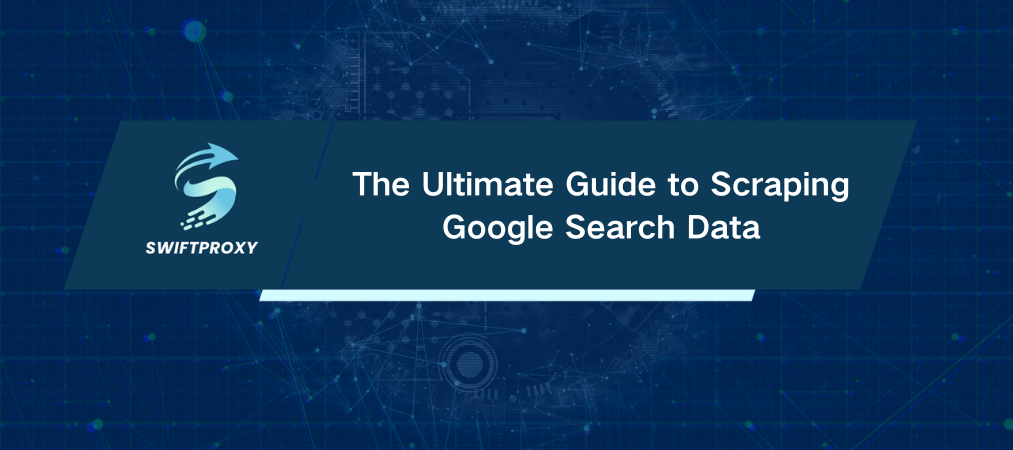The Ultimate Guide to Scraping Google Search Data

If you've ever tried to optimize your marketing campaigns or analyze SEO data, you know how crucial Google Search results can be. These pages are packed with valuable insights—keywords, rankings, ads, and more—that can unlock your next big marketing move. And Python? Well, it's your trusty tool for getting this data efficiently.
Let’s dive into how you can harness Python to scrape Google Search results and take your strategies to the next level.
Why Scrape Google Search in the First Place
Google Search results hold a goldmine of insights. From identifying long-tail keywords to tracking your competitors' rankings, the data you extract can supercharge your SEO strategies. You can also:
Spot trends and customer behaviors: Get a clearer view of what your audience is searching for.
Boost your SEO game: Fine-tune your content by analyzing what's working for others.
Spy on competitors: See what's driving traffic to their sites and adapt accordingly.
Stay ahead of the curve: Monitor your brand and media presence with ease.
With this kind of data, you can make better-informed decisions that drive tangible results. However, scraping Google isn't as simple as it seems. Google uses various techniques to deter automated bots. This guide will walk you through how to navigate those challenges effectively.
The Power of Scraping for SEO Optimization
By scraping Google, you can:
Find Related Keywords: Google's search results provide hidden gems—long-tail keywords, variations, and more—that can fuel your content strategy.
Monitor Competitors: Tracking rankings lets you keep tabs on your competition and adjust your strategy to stay ahead.
Extract Data from Snippets: Featured snippets and knowledge graphs are crucial for answering common questions and drawing in traffic.
Plus, some websites thrive by scraping "People Also Ask" questions and featured snippets. So why not make this your go-to method?
Getting to Know Google SERPs
The Google Search Engine Results Page (SERP) is no longer a basic list of links. Today, it's a dynamic collection of features tailored to each search. Here are a few common ones you’ll encounter:
Featured Snippets: A quick answer to the search query, often driving huge traffic.
AI Overviews: Google's generative AI now provides answers directly on the SERP. It's becoming a major player, especially for informational searches.
Paid Ads: These are sponsored results marked clearly on the page. You'll want to analyze these for competitor insights.
Video Carousels: Displaying relevant video results—often from YouTube or TikTok—these are especially prominent in queries with informational intent.
People Also Ask: The treasure chest for content marketers. These questions often reflect common queries that you can use to fuel your content strategy.
Local Pack: For searches with local intent, this feature displays nearby businesses with details.
As you can see, scraping Google Search results isn't just about pulling links. You'll need to consider these dynamic features when collecting data.
Finding Your Ideal Scraping Method
Now, how do you go about scraping Google Search? Well, there are a few routes you can take:
Google's Custom Search JSON API: The official and easiest method to extract results. However, it’s limited to 100 searches per day on free accounts.
DIY Scraper: Build your own tool using Python and libraries like Selenium and BeautifulSoup. This offers maximum control but comes with challenges (CAPTCHAs, frequent HTML changes).
Web Scraping APIs: The easy route is to use a third-party API that handles all the heavy lifting with no coding required.
Each method has its perks, depending on how much control you want and how often you need access.
Python for Google Search Scraping
If you decide to go the DIY route with Python, let's get to work. Here's how you can set up your scraper.
Step 1: Inspecting the HTML
To scrape Google Search, start by inspecting the page. Right-click on a search result and click "Inspect" to explore the HTML structure. Find the main div that contains all the listings—it's usually under the rso ID. From there, each listing will contain the URL, title, and description.
Step 2: Set Up Your Development Environment
Here's what you need to get started:
Python: Make sure Python 3.6+ is installed on your system.
Selenium & undetected_chromedriver: These help you handle JavaScript rendering and bypass CAPTCHAs.
Run this command to install the necessary libraries:
pip install selenium undetected-chromedriver
IDE: Any IDE will work (e.g., PyCharm or Visual Studio Code), but I recommend using PyCharm if you're just starting out.
Step 3: Write the Code
Create a new Python project and name it google_search_scraper.py. Add the following code:
import time
from selenium.webdriver.common.keys import Keys
import undetected_chromedriver as uc
from bs4 import BeautifulSoup
driver = uc.Chrome()
driver.get("https://www.google.com")
search_box = driver.find_element("name", "q")
search_box.send_keys("web scraping python")
search_box.send_keys(Keys.RETURN)
time.sleep(5)
soup = BeautifulSoup(driver.page_source, 'lxml')
listings = soup.select('#rso > div')
for listing in listings:
container = listing.find('div', class_="N54PNb BToiNc")
if container:
url = container.find('a')['href']
title = container.find('h3').text
description = container.find_all('span')[-1].text
print(url, title, description)
This code will scrape the URL, title, and description from the first page of results for the query "web scraping python".
Advanced Scraping Techniques
Want to take your scraping skills up a notch? Here are some pro tips:
Handling Pagination: Google results usually come in batches of 10. To scrape beyond the first page, you'll need to automate clicking the "Next" button (using Selenium).
Extracting Specific Data: You can target specific sections (e.g., People Also Ask, ads) by inspecting their unique HTML tags.
Improving Efficiency: Speed things up with asynchronous requests (via asyncio or aiohttp), or use multithreading to scrape multiple pages at once.
Exporting Scraped Data
Scraped data doesn't belong in the console—it belongs in a CSV file. Here's how you can export your findings:
import csv
with open('google_search_results.csv', 'w', newline='', encoding='utf-8') as csvfile:
writer = csv.writer(csvfile)
writer.writerow(['URL', 'Title', 'Description'])
for listing in listings:
container = listing.find('div', class_="N54PNb BToiNc")
if container:
url = container.find('a')['href']
title = container.find('h3').text
description = container.find_all('span')[-1].text
writer.writerow([url, title, description])
Avoiding Blocks and Bypassing CAPTCHAs
Google will block you if you send too many requests too quickly. Here's how to avoid that:
Use Proxies: Rotate IPs with residential proxies to mask your scraping activity.
Set Delays: Always space out your requests to avoid overwhelming Google's servers.
Rotate User-Agents: Use random user-agent strings to make your scraper look more like a real user.
If all this sounds complicated, consider using a scraper API. It handles CAPTCHAs, IP rotation, and blocks for you.
Conclusion
Google Search scraping is a powerful way to gather insights, though it comes with its challenges. Whether you choose a DIY approach with Python or opt for an API solution, consistency is key. It's important to scrape responsibly, monitor your usage limits, and rotate your IPs regularly.





















































